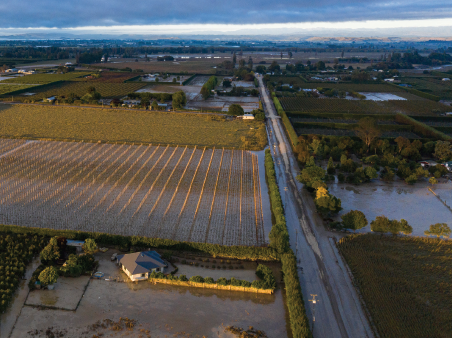It’s been a tough couple of months for many with Cyclone Gabrielle having wreaked havoc across our beautiful region.
Over 40,000 insurance claims have been lodged. The cost attached to these claims is around $890 million of which around $70m has been paid, according to The Insurance Council of New Zealand at 20th March. This only covers insurers who are members, and the industry consensus is that the final bill will be in the billions. What became apparent immediately after the cyclone was –
- How unprepared some people were from a business continuity perspective.
- The level of under insurance in some areas when people were making claims, including having insufficient business interruption cover.
Hindsight is of course wonderful thing but, given the nature of these severe weather events which are likely to continue with climate change, planning for any future events is critical. As you start moving forward and rebuilding, here are some things to consider –
Business Continuity Plan (BCP)
Developing a sound BCP is crucial to preventing even a minor disruption from turning into a catastrophe.
A BCP should not just cover natural disasters it should also focus on risks such as supplier failure, economic crisis, cyber-attacks, and pandemics. Should any of these risks occur, unprepared organisations don’t just stand to lose profits but their reputation, and possibly even their whole business.
BCP’s help organisations protect their employees and assets and resume operations in an expedient and more controlled way. They are not just designed to cover ‘in-the-moment’ procedures in a crisis, such as escaping your building safely from a fire, a BCP covers how you’ll get core parts of your business up and running again after the event. It includes things such as –
- Accessible recovery locations and emergency operations centres.
- A process for automatically switching telephone and data lines.
- Manual processes for continuing operations until technology is repaired.
- Processes to deal with the loss of information that is not available from backup data.
- A BCP awareness programme.
- A review process to keep the BCP up to date.
- Testing of the BCP on an end-to-end basis.
Once the plan is developed it is important to test it with a group of different people from the across the business. For example, what are the practical realities of switching over phone systems from an IT perspective or how do you get communications out if no one has power?
Risks are changing all the time, so the plan needs to be pulled out regularly and reviewed.
Business interruption (BI)
When you are next reviewing your insurances, make sure you review your BI policy thoroughly and have the correct sum insured and indemnity period. The indemnity period is the timeframe which the turnover of the business could be affected by damage to your buildings, plant or contents.
It should be the period it would take to restore the income of your business to the same position as if the loss had not occurred. We saw through the Christchurch earthquakes how inadequate many indemnity periods were due to the underestimation of how long it would take to re-establish a devastated business.
For example, getting tradespeople before the cyclone was a challenge and now demand is even higher – meaning that wait times to get work done are even longer. You will still need to be paying for staff wages and may incur costs for temporary premises until yours are reinstated. We appreciate that this is a challenging and Hawke’s Bay are here to help.



